

In the February 2003 issue of Sky and Telescope magazine, an article by O'Meara talks about his sighting of a cave-like feature in Copernicus. The general feature is only visible for a few hours each lunar month, and the cave formation is only possibly visible during a certain lunar/solar orientation. The most recent opportunity to see the feature was on January 13 at 3.5 UT. On this evening in San Diego, the moon was high in the sky and the seeing was average, so I took a number of images to try to capture the "cave". The clouds rolled in about 3.0 UT, so I didn't get the best possible time, but I captured good images both one hour and two hours early.
The 10" Newtonian telescope was projected to about F/60 through the AO-2 optics to an SBIG ST7E CCD camera, but the AO-2 electronics were turned off, since it doesn't work for extended objects like the moon. Exposures through a green filter (0.5 second) and a visible filter (0.2 second) were taken, and it turns out that they were essentially identical in terms of contrast and resolution. As waves of turbulence passed across the image, only luck allows good exposures.
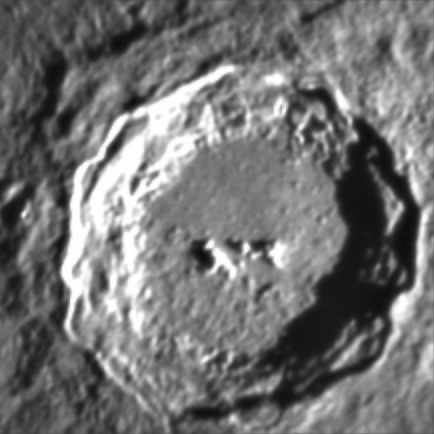
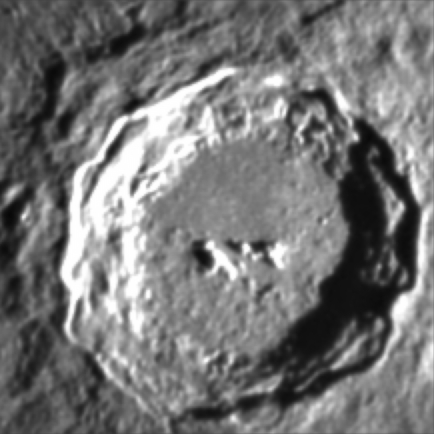
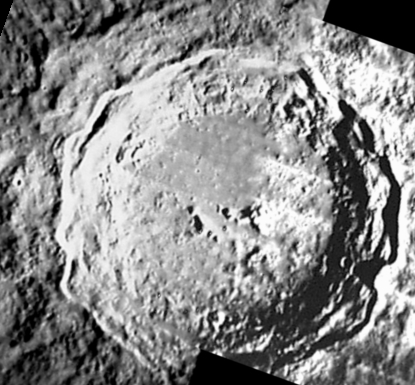
Left image: 1.5 UT; Right image : 2.6 UT, both on January 13, 2003. The main difference between the two images taken about an hour apart is the slightly longer shadows on the earlier image. Both images were flat-field calibrated, then gently processed using MaximDL maximum entropy processing followed by a gentle unsharp mask. The images were doubled in size after processing, resulting in a plate scale of about one arcsecond per 8 pixels. For comparison, the bottom mosaic was made up of a few images from NASA's web site from the Lunar Orbiter: it was rotated and stretched to mimic the same orientation as my images. The little crater on the left of the image is just about 1 mile diameter. The location of the "cave" is at 1 o'clock just inside the crater, shown circled in the image below.
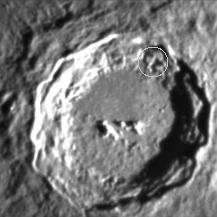
Larry DiRuscio noted that the lunar pair of images above have a stereo effect, due to the difference in shadows. To enhance the effect on the images below, and make it easier to see, I've shrunk the images and rotated them so that the sun appears coming from the upper right. To view, let your eyes focus on the images without crossing your eyes.
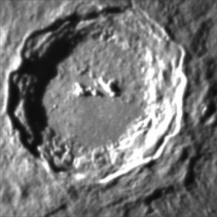 ....
....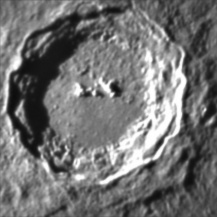
Return to the Image Gallery index page
Return to Stellar Products home page